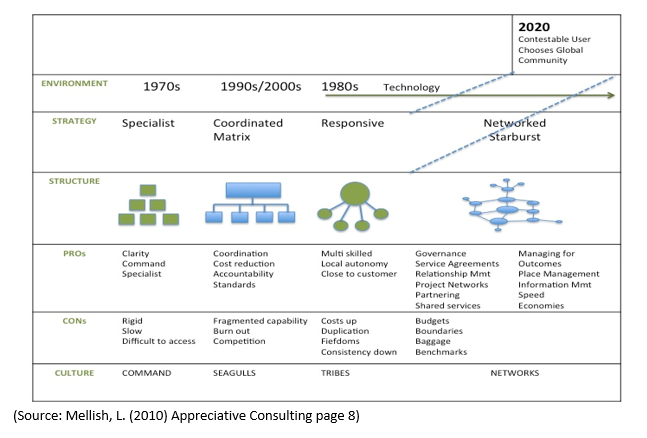TOPIC 1.4: Towards Networked Organisations
The demand for services, community expectations and the competition for resources influence strategic choices and the form of government. Government organisations adapt to the environments and systems within which they operate. Policy settings and the politics of the day guide the shape of government operations.
As Table 1.3 below illustrates, government business shifts reflect pressures and changes in the wider system. Government agencies, enabled by information and communication technologies, have reshaped and adapted from deep functional hierarchies through decentralised regional operations, through matrix arrangements to contemporary networked organisations.

Table 1.3 Shifts in Government Business.[1]
So called ‘machinery of government’ changes generally follow the election of new governments to reflect new priorities and strategic directions. The point perhaps to note is that ‘structure follows strategy’ so it is quite normal to expect adjustments to the structure in order to deliver new or different strategic agendas.
Government agencies may be seen as a network with nodes and links, capable of adapting to changing conditions and stakeholder influence.
15 min
- What structural or network changes have you observed following a change of government in your state?
- In what ways have stakeholders power and interests shifted?
- Think about the benefits and challenges of the changes.
- Mellish, L E. (2010). Appreciative Consulting (pp. 8). Mellish and Associates. ↵

